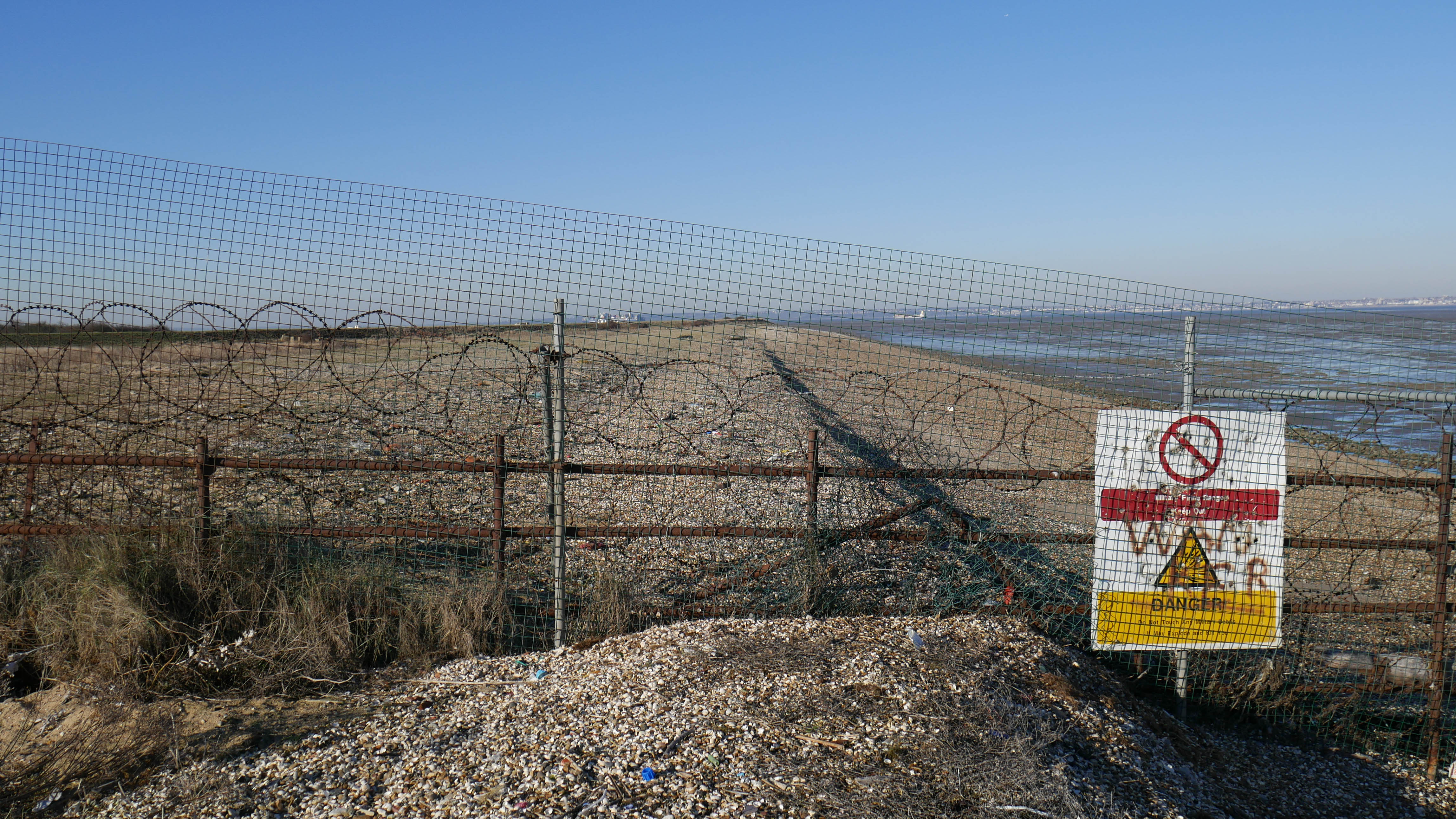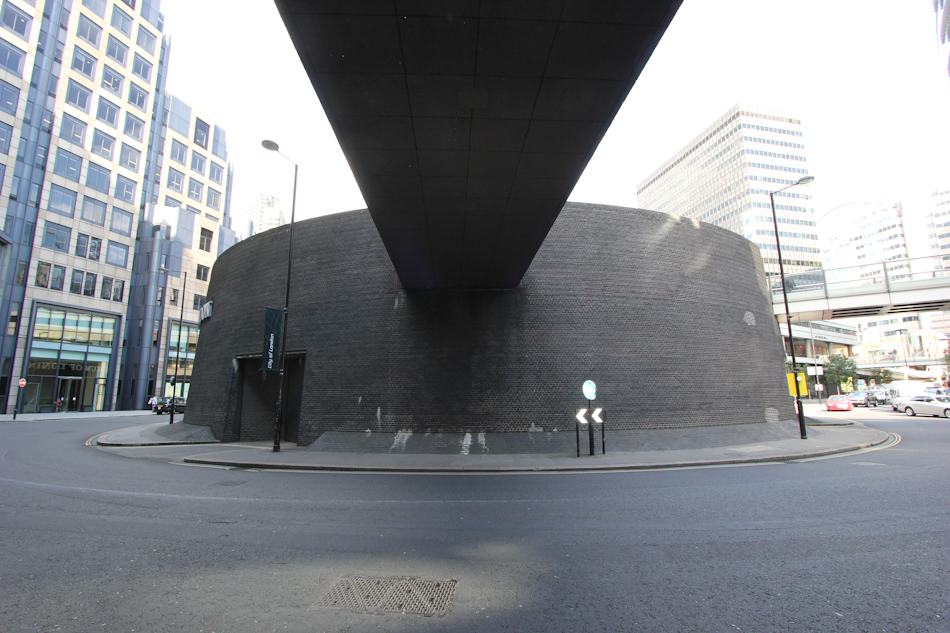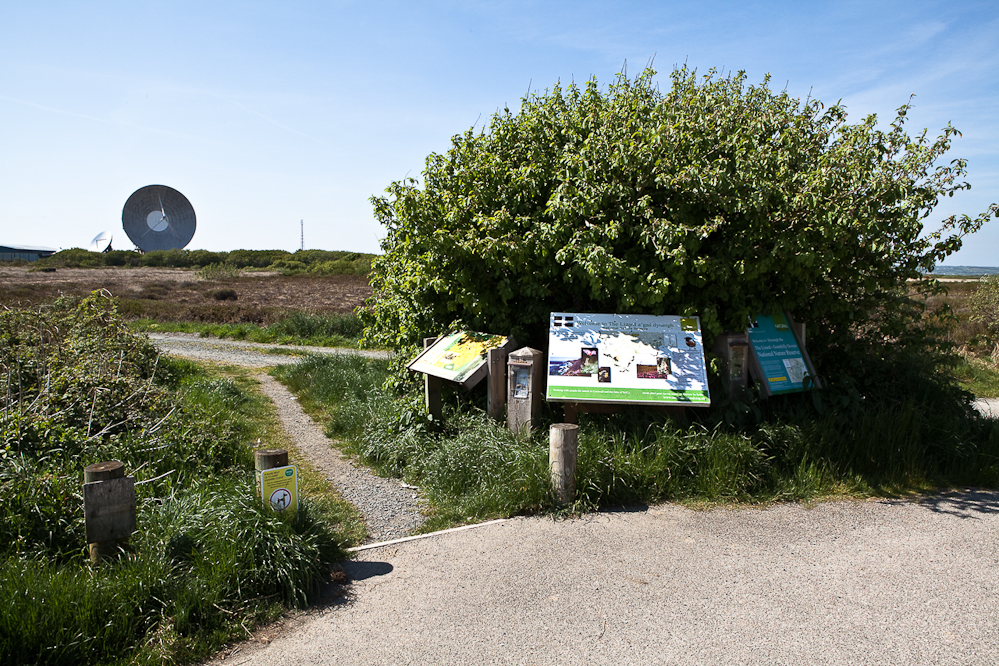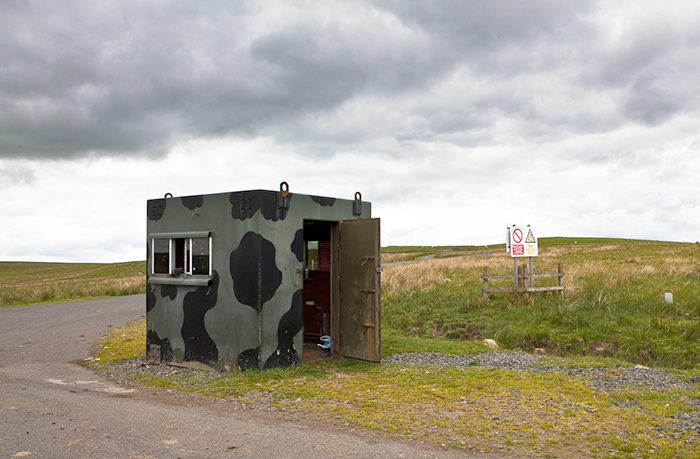Overt Research with Office of Experiments
 Isle of Grain. Kent.
Isle of Grain. Kent.Overt Research
Following a residency with the Centre for Land Use Interpretation (CLUI) in the USA in 2007, Office of Experiments developed the Overt Research method in order to catalogue and study scientific sites and other sites of intelligence, not normally accessible to the public in the UK.
The project was developed during a period in which ‘radical cartography’ associated with CLUI was emerging. This includes the work of leading activist/artist/geographers who had also undertaken residency with CLUI, such as Trevor Paglen, Rich Pell (Center for Post Natural History), Lucy Raven etc., and can also be identified with the emergence of experimental geography, in the USA, as defined by critic and curator Nato Thompson – including artists such as Lize Mogel, and organisations such as FOP (Friends of Pleistocene) and Spurse.
Developed in the UK from 2008 onward, the Overt Research project integrated our working knowledge of scientific spaces, networks and resources, with the field working methods of CLUI project manager Steve Rowell, and integrating database technology from UK activist and software designer, Lisa Haskel. Together we worked to identify and provide new reading of a post-industrial ‘laboratory landscape’. The project started in the South West of the UK.
Working with GIS Data mapping, fieldwork and standard visual and technological methods of observation of landscape developed by CLUI, the approach quickly expanded to cover the evident intersections of science with the military and military/industrial complex. Covering everything from science parks and industrial zones, to the waste-lands and remote spaces used by scientists in the UK and further afield, the project moves beyond the goals of Big Science, i.e. the communications of science as identified in singular sites such as Diamond Light Source or even historic sites such as Greenwich Observatory. Overt Research extends beyond a simple spatial record, but moves to explore the inter-relationship and by implication, moral and ethical issues at stake when contemporary science is funded by non-scientific institutions. This means scrutinising the infrastructure and support structures of science, its social and political relations (drawing on work in sociology of science, and science and technology studies).
The combination of fieldwork/field observation, alternative knowledge gathering – using experimental geography techniques/technologies, with a range of other standard and non-standard research approaches, led to the development of a system through which we could classify the levels of transparency of sites, and knowledge therein, as they appeared to the public. The relationship to the term covert, and the use of technologies often associated with surveillance, were key to the development of our approach.
Overt as a term specifically reflects the aims of our fieldwork in relation to the subject – to explore the relationship between the public and closed sites used for scientific research, and to explore related issues in terms of access to knowledge of and about where and how this activity takes place. As viewed from the outside, science is often considered opaque, leading to issues of trust, uncertainty, and even the emergence of conspiracy. To this end, Overt Research explored both the truth and false information that circulated around scientific sites, exploring the social imaginary in relation to the scientific and technological complex.
By engaging with a range of audiences and the public in general, we supplied tools and ID cards, legal and other relevant information (D-Notice etc) for researchers and others wanting to join the project. We have coordinated bus tours and created user maps, collated video and photographic documentation as well as exhibited the archive of Mike Kenner, and in ongoing work, published field guides and book chapters dedicated to this study (South West, North East) and our approach.
The development of the Overt Research method still informs our approach to fieldwork, specifically the underpinning use of new knowledge and technologies emerging from within scientific disciplines in relation to landscape. As artists/ activists and researchers, the concerns that were drawn out in the overt research project are key to understanding and reworking our view of science approach to the natural/post-natural, the advanced sensing capability of humans, the use of data in exploring impacts of human activity and the interrogation of scientific ethics, which remain acutely important to seeing and shaping the future landscape in which we hope to live.
Critical Excursions (Spatial Tours on a Bus)
Between 2008-17, Office of Experiments supported and organised a number of Critical Excursions, some with workshops. Three were led by Neal White : Secrecy and Technology, Southampton Region (2009), Secrets of Portland, Weymouth, Dorset (2011) and Experimental Ruins, London and M25 (2012). Two were led Rowell with Office of Experiments support; Post-Industrial and Future Landscapes of the North-East Newcastle, (2010) and TelePort – A Tour of the Lizard’s Landscape of Telecommunication, Cornwall (2011).
These tours formed part of our educational projects and were developed with Arts Council of England, Lottery Heritage, Museum of London, Arts Catalyst and others. A number of printed and one online Field Guide was also produced.. Further information on these are under publications, the Critical Excusions led by White are linked from images below.
![Experimental Ruins, London and M25. 2012]()
![Secrecy and Technology Bus Tour - South West UK. 2009]()
![Secrets of Portland, South West UK, 2011]()
![A Tour of the Lizard’s Landscape of Telecommunication]()
![Post-Industrial and Future Landscapes of the North-East]()
Between 2008-17, Office of Experiments supported and organised a number of Critical Excursions, some with workshops. Three were led by Neal White : Secrecy and Technology, Southampton Region (2009), Secrets of Portland, Weymouth, Dorset (2011) and Experimental Ruins, London and M25 (2012). Two were led Rowell with Office of Experiments support; Post-Industrial and Future Landscapes of the North-East Newcastle, (2010) and TelePort – A Tour of the Lizard’s Landscape of Telecommunication, Cornwall (2011).
These tours formed part of our educational projects and were developed with Arts Council of England, Lottery Heritage, Museum of London, Arts Catalyst and others. A number of printed and one online Field Guide was also produced.. Further information on these are under publications, the Critical Excusions led by White are linked from images below.
Critical Excursions




